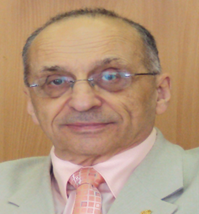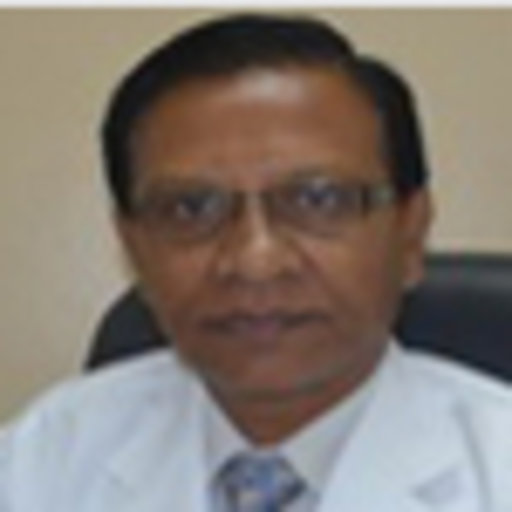Scientific Program
Keynote Session:
Title: Autoimmune Mechanisms of Late Renal Complications of COVID-19 Infection and Methods of their prevention and treatment
Biography:
Valerii A. Voinov – MD, Ph.D., professor, head of Therapeutic apheresis department, of I.P. Pavlov’s St. Petersburg State Medical University. He is the author of more than 470 scientific papers, including 12 monographs, 25 inventions, and patents on the problems of therapeutic apheresis in various fields of medicine. Valerii A. Voinov participated in creating the first domestic plasma filters PFM-800 as well as PFM-TT “ROSA” and development of devices and methods of membrane plasmapheresis and their deployment in medical institutions of Russia and abroad in many countries of Europe, Asia, Africa, and Latin America. His main book, “Therapeutic Apheresis”, has been translated into Bulgarian, Romanian, English, and Spanish. Valerii A. Voinov – MD, Ph.D., professor, head of Therapeutic apheresis department, of I.P. Pavlov’s St. Petersburg State Medical University. He is the author of more than 470 scientific papers, including 12 monographs, 25 inventions and patents on the problems of therapeutic apheresis in various fields of medicine. Valerii A. Voinov participated in creating the first domestic plasma filters PFM-800 as well as PFM-TT “ROSA” and development of devices and methods of membrane plasmapheresis and their deployment in medical institutions of Russia and abroad in many countries of Europe, Asia, Africa, and Latin America. His main book, “Therapeutic Apheresis”, has been translated into Bulgarian, Romanian, English, and Spanish.
Abstract:
The COVID-19 pandemic affected more than 40 million people on Earth, of which more than 1 million died. However, even among the survivors, many have long-term consequences, fraught with serious health disorders.
The kidneys are one of the target organs for COVID-19 infection. Signs of proteinuria and hematuria can be found in 75% of patients. Moreover, 52% of patients requiring artificial ventilation of the lungs develop acute kidney damage within 24 hours after intubation. The mortality rate in this case reaches 30-70%, despite the conduct of renal replacement therapy. The predisposing factors are diabetes and arterial hypertension, as well as previous chronic liver and kidney disease, which is accompanied by a higher mortality rate - up to 53%. The main pathogenetic factor in this case is endotoxemia with an increase in the levels of C-reactive protein, interleukin-6, impaired T- and B-cell immunity. Both the glomerular apparatus and the tubular epithelium with significant disorders of their functions, requiring renal replacement therapy, are subject to toxic damage. These disorders are associated not so much with their direct viral damage, but with the body's inflammatory immune response with the release of a number of cytokines and complement, which contributes to the development of vasculitis, like those that cause kidney diseases such as ANCA vasculitis (microscopic polyangiitis, granulomatous vasculitis - diseases of Wegener and Goodpasture). A kidney biopsy is sometimes the first time a true crescentic proliferative glomerulonephritis is diagnosed.
It should be considered that changes in the renal parenchyma remain for a long time after formal recovery and often turn into a chronic form and even to the so-called delayed mortality. There is a lot of evidence to support the autoimmune nature of such long-term complications after COVID-19 infection. One of the factors contributing to them is the proximity of the antigenic structure of the proteins of the virus and humans. The severity of the complications caused makes it necessary to carry out serious measures for the rehabilitation of such patients after their recovery. Given the autoimmune nature of these complications, it is most advisable to use plasmapheresis for this, with the help of which it is possible to remove not only autoantibodies and cytokines but also many other toxic substances accumulated during the course of the illness, including hepato- and nephrotoxic drugs. And if you use these methods of extracorporeal detoxification during illness, you can prevent critical conditions and all long-term complications.
Title: Ferrotoxicity and its amelioration by endogenous vitamin D in experimental acute kidney injury
Biography:
Dr. Pragasam Viswanathan completed his Ph.D. at the age of 29 years from the University of Madras, Dr. ALM PGIBMS, and postdoctoral studies at the Medical College of Wisconsin, Milwaukee, US. Currently, he is the Professor and Dean of the School of Bio Sciences and Technology, VIT University, Vellore, Tamil Nadu, India. He has published more than 40 papers in reputed journals and has been serving as an editorial board member and Academic Editor of repute.
Abstract:
Acute kidney injury (AKI) causes significant morbidity and mortality. This experimental animal study investigated the simultaneous impact of iron and vitamin D on AKI induced by Iohexol, an iodinated, non-ionic monomeric radiocontrast agent in Wistar rats. Out of 36 healthy male Wistar rats, saline was injected into six control rats (group 1) and Iohexol into the remaining 30 experimental rats (groups 2 to 6 comprising six rats each). Biochemical, renal histological changes, and gene expression of iron-regulating proteins and 1 α-hydroxylase were analyzed. Urinary neutrophil gelatinase-associated lipocalin (NGAL), serum creatinine, urine protein, serum and urine catalytic iron, 25-hydroxyvitamin D3, 1,25-dihydroxyvitamin D3, and tissue lipid peroxidation were assayed. Rats injected with iohexol showed elevated urinary NGAL (11.94±6.79 ng/mL), serum creatinine (2.92±0.91 mg/dL), and urinary protein levels (11.03±9.68 mg/mg creatinine) together with histological evidence of tubular injury and iron accumulation. Gene expression of iron-regulating proteins and 1 α-hydroxylase was altered. Serum and urine catalytic iron levels were elevated (0.57±0.17; 48.95±29.13 µmol/L) compared to controls (0.49±0.04; 20.7±2.62 µmol/L, p<0.001). Urine catalytic iron positively correlated with tissue peroxidation (r=0.469, CI 0.122 to 0.667, p=0.004) and urinary NGAL (r=0.788, CI 0.620 to 0.887, p<0.001). 25-hydroxyvitamin D3 (61.58±9.60 ng/mL) and 1,25-dihydroxyvitamin D3 (50.44±19.76 pg/mL) levels increased simultaneously. On multivariate linear regression analysis, serum iron, urine catalytic iron, and tissue lipid peroxidation independently and positively predicted urinary NGAL, an AKI biomarker. This study highlights the nephrotoxic potential of catalytic iron besides demonstrating a concurrent induction of vitamin D endogenously for possible renoprotection in AKI.
Title: HYDROURETIC RENAL FUNCTION IN RATS WITH ACUTE RENAL FAILURE FOLLOWING INTAKE NATURAL ZEOLITES OR GALEGA ORIENTALIS PLANT POWDER
Biography:
The International Academy of Sciences of the High School and Russian Academy of Natural Sciences, the academician of the International Academy of Sciences of ecological safety, Dr.Sci.Biol., Professor, Head of Dept. of anatomy, physiology, and safety of life, Director of the scientific research institute of health and safety at Novosibirsk State Pedagogical University, the honored professor of Tuva State University. The foreign member of the American physiological society, a full member of the European Society of pediatrists-nephrologists, and the editorial member of seven scientific journals. In 1996 was included in the International biographic directory of famous scientists. He has over 800 publications that have been cited over 5900 times, and his publication H-index is 31.
Abstract:
To find out the possibility of using natural zeolites and plant resources to correct kidney functions in acute renal failure (ARF), two series of experiments were conducted on adult male Wistar rats. In each series, animals with experimentally induced ARF were divided into 2 groups. The first group consisted of animals with ARF who received standard feed, the second group included animals with ARF who received additives in addition to the feed in the form of a) powdered natural zeolite at the mass of 5% by weight of feed (first series, ARF + Z); b) Galega Orientalis plant powder (ARF + GO) in the amount of 2% by weight of feed (second series). In addition, a common control group (K) was organized, consisting of intact animals on a standard diet. Analysis of background urine samples in both series revealed the presence of polyuria in rats with ARF (control - 0.2±0.02; ARF - 0.3±0.04∆ ml/100g h), despite a significant decrease in GFR (control - 17.7±2.9; ARF - 6.8±1.0∆ ml/100g h). The diuretic reaction was probably due to a decrease in the water reabsorption (control – 99.2 ± 0.1; ARF – 95.6± 0.8∆%). In rats, after three days of per oral intaking zeolites, only a reduced level of relative reabsorption of fluid was observed compared to the control (97.2± 0.9∆%), while diuresis (0.2±0.1 ml/100g h) and GFR (15.0± 5.8 ml/100g h) did not differ from similar parameters of healthy animals. Against the background of taking the powder of the Galega Orientalis plant, only an increase in the volume of background diuresis was noted (0.5 ± 0.06∆ ml/100g h). After per oral intake of water load (5% of body weight), the level of diuresis in animals with ARF was 2 – 2.5 times lower than in the control group (K – 1.6 ± 0.3; ARF - 0.7± 0.3∆; ARF+ Z - 0.6± 0.3∆ ml/100g h), which was probably due to a reduced level of GFR (K – 20.3±3.1; ARF – 12.7±2.2∆; ARF+Z - 14.9±5.3 ml/100g h) and increased reabsorption of fluid (control – 91.7±1.1; ARF – 92.3±2.0; ARF+Z - 95.2±1.3Δ %), respectively. Intake of the Galega Orientalis plant powder did not give any significant differences in renal response compared to the ARF group. It can be concluded that natural zeolites caused an improvement in filtration and reabsorption processes in rats with acute renal failure, contributing to the normalization of the functional state of the kidneys. At the same time, the Galega Orientalis plant powder did not have a nephroprotective effect. _________________ Significant differences from rats with ARF and/or control.
Title: Estimated pulse wave velocity and albuminuria in chronic renal disease patients
Biography:
Abstract:
Background and Aims: In chronic kidney disease (CKD) elevated pulse wave velocity was associated with renal micro-vascular damage. In this study, we aimed to address the association between estimated pulse wave velocity (ePWV) and classified albuminuria in pre-dialysis chronic kidney disease patients. Methods and Results: Two hundred thirty-two subjects with mean age of 68.5 ± 15.03 years old were enclosed. Our participants were classified in both estimated glomerular filtration rate (eGFR) and albuminuria categories according to the Kidney Disease Improving Global Outcomes 2012 criteria. ePWV was calculated using an equation from age and mean blood pressure (MBP). High-density lipoprotein cholesterol (HDL-C), triglycerides, waist circumference, and uric acid were measured. X2 tests and an adjusted model were applied to investigate the ePWV association with albuminuria entering covariates. We divided the patients in two groups according to mean ePWV value. The patients with a high ePWV had significantly higher uric acid levels and albuminuria, but significantly lower eGFR and HDL-C than the patients with a lower ePWV.X2 tests showed a significant association between high ePWV and classified albuminuria, classified eGFR and diabetes mellitus (x2=18.7, p=0.001, x2=62.2, p=0.001 and x2=8.6, p=0.003 respectively ). The adjusted model showed the ePWV value to remain a significant independent risk factor for the occurrence of albuminuria controlling for diabetes mellitus and eGFR less than 60ml/min/1.73m2, even though these both variables were proved excessively significant for manifested albuminuria. Conclusion: Our findings suggest a significant association between ePWV and moderate/severe albuminuria in patients with pre-dialysis chronic renal disease.
Title: Exploring of the root causes of Chronic Kidney Disease of uncertain etiology (CKDu) via analysis of toxic metal contents in environmetal constituents; water, soil, and food
Biography:
Abstract:
Chronic kidney disease (CKD) is a global public health concern attracting international attention due to its rapid spread. However, CKD of unknown etiology is also prevalent and creates rapid progress in certain regions of the world, particularly in Africa, Central America, and Asia. An intimate relationship between the quality of the water, soil, and food and the underlying geology has been recorded repeatedly in different geographical regions of the world. Many risk factors are hypothesized for prevailing CKDu, such as unidentified environmental toxins, chronic pesticide exposure, increased levels of nephrotoxic heavy metals in water and soil, high fluoride levels, potential impacts of AlFx on soil and water, and growth of cyanobacteria in water resources. Our investigation's overall intention is to risk assessment of drinking water, agricultural soil, rice (Oryza sativa), and fish species (Etroplus suratensis) by evaluating the toxic metal contents in CKDu endemic areas in Sri Lanka. Further, findings were compared with a CKDu non-endemic area to grab better clarifications. With the Ministry of Health's aid in Sri Lanka, CKDu hotspots have been identified for the sampling process. An adequate number of drinking water, paddy soil, rice, and fish samples were collected during the dry season (August 2019). As CKDu hotspots, Eppawala GN (Grama Niladhari) division, Medirigiriya GN division, and Giradurukotte GN division were selected, and the Dambethalawa division was selected as the reference site in Sri Lanka. Results depict that, Mean concentrations of heavy metals/metalloids such as Mn, Co, As, Cd, Pb, Cu, Zn, Fe in drinking water of selected CKDu endemic areas were far below Sri Lankan water quality standards. Besides, all sampling locations dropped below the medium range of the Heavy Metal Pollution Index of water (HPI 15 – 40). Geo accumulation indexes (Igeo) of paddy soil reveal that agricultural soil in selected CKDu endemic areas is moderately polluted with toxic metals/metalloids such as As, Pb, Cu, Ni, Cr, Zn, and Cd. However, the concentrations of Cr (p=0.44), As (p=0.36), and Cd(p=0.37) of paddy soil in CKDu hotspots were significantly higher than the reference. Among the trace metals analyzed in rice grains in the CKDu endemic areas, mean Cr, Cd, As, and Pb contents were recorded as 0.342 mg/kg, 0.011 mg/kg, 0.035 mg/kg, and 0.112 mg/kg, respectively. The mean concentrations of Cd, Pb, As, and Cr in Etroplus suratensis were 84.31, 45.20, 206.85, and 115.62 μg/kg, respectively, in the Ulhitiya reservoir (in CKDu endemic area). But significantly lower Cd level contents were observed in the CKDu hotspot than in the reservoir in the reference area. Application of fertilizers that contained high doses of toxic metals could be the driving force for the agricultural soil pollution with heavy metals and long-term exposure to the toxic metals via drinking water and frequently consumed foods may generate a risk for kidney tissue damage.
Title: Effects of a resistance training program on fitness, muscle mass and quality of life in kidney transplant recipients
Biography:
Abstract:
Objective: To investigate the effects of 10-week resistance exercise-based intervention on muscular strength, cardiorespiratory fitness, muscle mass and structure, and quality of life in kidney transplant recipients. Design and setting: All participants underwent a familiarization period of the tests, which were conducted one week later and after a 10-week period. Subjects: Sixteen kidney transplant recipients were recruited and voluntarily participated in the study. Main outcomes measures: At each time point participants completed: (i) a quality of life questionnaire (KDKoL), (ii) muscle thickness assessment by ultrasonography (iii) lower limb muscle strength tests, (iv) fitness tests, and (v) routine biochemical analyses. Results: The classical SF-36 domains did not differ between groups after the intervention. There were no between-group differences after the intervention in most of the domains related to the kidney disease-specific, with the exception of the scales of “effects of kidney disease” and “burden of kidney disease” that significantly improved after the intervention as compared to placebo. There were significant differences in handgrip levels after intervention in the training group vs. control (delta handgrip strength in controls -0.38 ± 1.50 (95% confidence interval CI, -2.50 to 0.43 kg) vs. 1.87±0.835 (-0.64 to 3.28 kg) in the training group; P=0.01). Patients in the intervention group improved by 54.6 ± 24.4 meters in the six minutes walk test, whereas patients in the control group improved by 8.6 ± 26.2 meters (P<0.006 for group differences). Patients in the intervention group employed less time in the get-up and go test after the intervention (-0.2 ± 0.4 seconds) whereas patients in the control group took more time (0.2 ± 0.4 seconds; P=0.003 for group differences). Conclusions: Ten weeks of resistance training improved several measures of physical function in kidney transplant patients, and the patients perceived this as a reduction in the burden felt by their disease.
Title: MANAGEMENT OF ENVENOMATION INDUCED AKI WITHINTERMITTENT HAEMODIALYSIS IN A DOG
Biography:
Abstract:
A fourteen-month-old Labrador dog (BRUNO) was presented to the pet hospital with a recent history of viper envenomation. The dog was vocalising and restless. On the day of presentation, seem creation and blood nitrogen (BUN) values were 3.7mg/dL and 89.1 mg/dL respectively. The serum creatinine and blood urea nitrogen values elevated within two days to BRUNO IN PET HOSPITAL KOCHIN 6.7mg/dL and 138.6mg/dL respectively. The doy become oliguria. The clinical signs and laboratory values were consistent with acute kidney injury. Intermittent haemodialysis (IHD) was carried out as the dog was refractory to medical management. Post IHD creatinine and BUN values were 6.7 mg/dL and BUN Values 101 mg/dL, respectively. Serum creatinine and BUN value increased to 7 mg/dL and 130 mg/dL, the next day after IHD. The second session of IHDreduced serum creatinine and BUN values to 6 mg/dL and 97.8 mg/dL. The dog continued to be dull, and anorexic with oliguria. The third session of IHD helped in the reduction of serum creatinine and Oliguria resolved. The dog resumed his appetite and was clinically stable. The dog was observed for the next 24 hours and discharged. On review after three days, the dog exhibited considerable improvement; creatinine and BUN values were 3.1 mg/dL and 54.4 mg/dL, respectively. Ten days later follow-up revealed that creatinine and BUN values stabilised at 1 mg/dL and 24 mg/dL. The dog showed alow and steady recovery from acute kidney injury over a period of 20 days. Viper envenomation induces kidney injury (Hrovat et al 2013) Intermittent haemodialysis is a renal replacement therapy which is used to alleviate lifethreatening azotaemia electrolyte and acid-base imbalances and control intravascular volume (Cowgill) and Elliott, 2000). This article describes a case viper envenomation induced acute kidney injury in a dog, which was successfully managed with three sessions of intermittent haemodialysis.
Title: Hypertension in Children
Biography:
Saleh Al Shurafa is a Sr. Consultant Pediatrician and Pediatric Nephrologist and Head, Pediatric Nephrology, Qatif Central Hospital, Qatif, Saudi Arabia. He is a President, Saudi Hypertension Management Society.
Abstract:
BP increases gradually with age and height, therefore standard normograms are necessary for the interpretation of hypertension in children. Most children track in a constant percentile around the mean
The development of a national database and Saudi centiles is going to be discussed. Prevalence is not known but our prevalence might be high due to the high prevalence of obesity. The epidemic of childhood obesity, the risk of developing left ventricular hypertrophy, and evidential development of atherosclerosis in children would make the detection of and intervention in childhood hypertension important to reduce long-term health risks. However, supporting data is lacking. Secondary HTN is more common in young children, while essential HTN is more common in older children and adolescents, a steadfast reason why clinicians should be alert to possibility of identifiable causes in young children .most hypertensive children are asymptomatic or have a variety of non-specific symptoms; measurements of BP with the appropriate sized cuff should be a part of the routine pediatric evaluationin every clinic with visits in children of 3 years or older and of all age level’s, and in children < 3 years with specific clinical conditions. Management is multifaceted. Nonpharmacological treatments include weight reduction, exercise, and dietary modifications. Recommendations for pharmacologic treatment are based on symptomatic hypertension, evidence of end-organ damage, stage 2 hypertension, stage 1 hypertension unresponsive to lifestyle modifications, and hypertension with diabetes mellitus.
Keynote Session:
Title: Hyperkalemia: Present and Future
Biography:
Rajesh Sherke is a Senior Consultant Nephrologist at Al Qassimi Hospital in Sharjah, United Arab Emirates. He has also worked as a consultant nephrologist in the Ministry of Health and Prevention in UAE.
Abstract:
Hyperkalemia is a potentially serious medical condition in which elevated serum potassium levels can increase the risk of severe cardiac electrophysiology abnormalities (e.g., cardiac arrhythmias) and sudden death. Modulation of the renin-angiotensin-aldosterone system (RAAS) in reducing disease progression and in improving the outcome in heart failure and chronic kidney disease is very well documented and is recommended in respective guidelines. Unfortunately, patients with heart failure and chronic kidney disease are at greater risk of hyperkalemia with RAAS inhibitors than those without these conditions. Prescribing of renin-angiotensin inhibitors and mineralocorticoid antagonists is often limited by the occurrence of hyperkalemia and further, underutilization of these potentially beneficial medications inconsistent with established guidelines is common due to perceived risk of hyperkalemia. Although, there are effective management strategies in the treatment of acute hyperkalemia, the long-term management of hyperkalemia often requires withdrawing or reducing the doses of drugs proven to improve the outcome of heart failure and chronic kidney disease and/or implementing severe and sometimes intolerable dietary potassium restrictions. Withdrawal of RAAS inhibitors leads to increased morbidity and mortality consequent to rapid disease progression resulting in incremental healthcare costs. On the contrary, hyperkalemia itself is associated with significant adverse clinical outcomes and incremental financial burden. The presence of hyperkalemia is a big risk factor for all-cause mortality regardless of the kidney function and results in increased emergency department visits and hospitalizations with economic consequences. There is an unmet need for long-term treatment strategies for hyperkalemia. The new potassium binders (patiromer and zirconium cyclosilicate) have extended novel treatment options for chronic hyperkalemia allowing the use of RAAS inhibitors.
Title: Hypertension After Kidney Transplantation: Prevalence and Predictive Factors.
Biography:
Abstract:
The prevalence of hypertension in kidney transplant patients ranges from 70 % to 90%. Cardiovascular morbidity and mortality also decreased allograft survival are important consequences of inadequate control of hypertension. It’s a retrospective descriptive cohort study including 32 kidney transplant patients for 48 months at the Nephrology department in La Rabta Hospital in Tunis during the periode from the first of January 2015 to the 31 December 2018. One year after transplantation 22 kidney transplant recipients have hypertension (68,7%). The prevalence of hypertension when renal transplantation was performed was 84%. The middle age of our patients was 31,81±8,3 years. The gender ratio was 1,9. Renal replacement therapy was performed by hemodialysis in 25 cases (78%) and 7 patients (22%) by peritoneal dialysis. Living kidney donor transplant in 94% of cases with female gender in 65 %. The middle age of kidney donors was 44,38 years old±10,9years. One year after transplantation 5 patients had developed diabetes (15%), post-transplant dyslipidemia occurs in 26 cases (81%), and anemia in 2 cases (6%). A comparative study was performed between two groups: Group A: Hypertension in kidney transplant recipients after one year (n=22) Group B: patients who did not develop hypertension after kidney transplantation (n=10). Factors significantly associated with hypertension after kidney transplant were: • Age of kidney recipient more than 50 years old before transplantation. • Dyslipidemia before transplantation • Overweight and obesity • Creatinine one year after kidney transplant ≥15mg/dl. The etiology of post-transplant hypertension is multifactorial: Native kidneys, immunosuppressive therapy, renal graft artery stenosis, and chronic allograft nephropathy are the most common causes.
Title: The role of ultrasound monitoring of morphological changes of the kidney in Chronic Renal Diseases
Biography:
Marsida Duli, is a nephrologist. She finished her doctoral studies in clinical morphology. Also, she studied at the University of Siena Health Services Management. Actually, she is the Head of the Nursery and Physiotherapy Department at the European University of Tirana.
Abstract:
Chronic renal disease is a functional diagnosis defined as the irreversible, general, and progressive reduction of more than half of renal function, which is translated through the GFR value. In Chronic Renal Insufficiency, progressive loss of renal function is accompanied by a progressive reduction in kidney size over a period of several months or several years. IRK is a consequence of a large number of diseases such as glomerulonephritis, diabetes, hypertension, polycystic kidney disease, etc. In the initial stages of advanced chronic renal failure everything works normally, consequently, patients seek medical attention only in cases where the disease progresses to the uremic stage. Normally adult patients become aware of renal failure when the GFR drops below 15 mL/min, known as the terminal stage of kidney disease. Ultrasound examination is able to identify Chronic Renal Insufficiency in the early stages, to identify different pathologies causing it, to differentiate between different types of histopathological lesions. Purpose: The study aims to provide data on the change of morphological parameters of the kidney of a population with Chronic Renal Disease through ultrasound, as well as to identify valid correlations of impaired renal function. Methodology: The study is retrospective, conducted at QSUT with the cards of patients hospitalized with Chronic Renal Disease during the years 2012-1015 at the Nephrology service. Data collection for 2184 cards was performed through an individual file for each card, with data on morphological changes in ultrasound, clinical and demographic. Results: The average age of patients with SRK is 55.38 years, and mostly female. ICP represents the leading cause of SRKs with 39.2%, followed by Diabetic Nephropathy and GNK. There is a statistically significant relationship between kidney size and stages of Chronic Renal Disease, between the thickness of the renal parenchyma and the stage of the disease, Creatinemia, and Azotemia levels. In renal polycystic there is a positive relationship between the stage of SRK and the number of cysts; patient age and number of cysts. Conclusions: Kidney size decreases with the progression of SRK stages, but is not indicative of assessing the type of underlying disease causing SRK. With increasing SRK .stage, creatinine, and azotemia values, the thickness of the renal parenchyma thins. In renal polycystic ovaries with increasing stage of SRK more cysts and with increased size are evidenced in the kidneys through ultrasound.












